
Warcraft III: Reign of Chaos is a high fantasy real-time strategy computer video game developed and published by Blizzard Entertainment released in July 2002. It is the second sequel to Warcraft: Orcs & Humans, after Warcraft II: Tides of Darkness, the third game set in the Warcraft fictional universe, and the first to be rendered in three dimensions. An expansion pack, The Frozen Throne, was released in July 2003. Warcraft III is set several years after the events of Warcraft II, and tells the story of the Burning Legion's attempt to conquer the fictional world of Azeroth with the help of an army of the Undead known as the Scourge, led by fallen paladin Arthas Menethil. It chronicles the combined efforts of the Human Alliance, Orcish Horde, and Night Elves to stop them before they can corrupt the World Tree.
Natural Selection is a modification for the video game Half-Life. Its concept is a mixture of the first-person shooter and real-time strategy game genres. The game was created by Charlie "Flayra" Cleveland, who later founded the company Unknown Worlds Entertainment. Natural Selection v1 was first publicly released on Halloween 2002, and is now at version 3.2. Natural Selection 2 was released in late 2012.

Battlezone is a first-person shooter real-time strategy video game, developed and published by Activision. It was released for Microsoft Windows in 1998. Aside from the name and presence of tanks, this game bears little resemblance to the original arcade game of the same name. Activision remade it into a hybrid of a tank simulation game, a first-person shooter and a real-time strategy game.

Earth 2150: The Moon Project is a sequel to the real time strategy game Earth 2150. While the game is in fact a stand-alone game, many consider it an expansion pack because it does little more than provide new missions, and weapons. The story takes place alongside the original game's story. The Moon Project was released in 2000 by Strategic Simulations, Inc.
The concept of a mutant is a common trope in comic books and science fiction. The new phenotypes that appear in fictional mutations generally go far beyond what is typically seen in biological mutants and often result in the mutated life form exhibiting superhuman abilities or qualities.

Command & Conquer: Tiberian Sun is a 1999 real-time strategy video game developed by Westwood Studios, published by Electronic Arts, and released exclusively for Windows in August 1999. The game is the sequel to the 1995 game Command & Conquer. It featured new semi-3D graphics, a more futuristic sci-fi setting, and new gameplay features such as vehicles capable of hovering or burrowing. The main story of the game focuses on a second war between the UN-backed Global Defense Initiative (GDI) and the cult-like Brotherhood of Nod, both seeking to rule over an Earth which is undergoing rapid ecological collapse.

Command & Conquer: Renegade is a first- and third-person shooter video game developed by Westwood Studios and is part of the Command & Conquer series. It is the only Command & Conquer game that uses the first-person view and was the last installment in the series to be produced under Westwood Studios banner. It was released on February 26, 2002 by EA Games. The game received generally favorable reviews from critics.
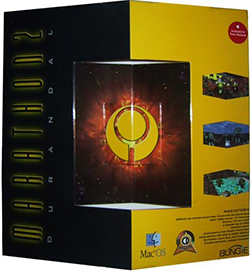
Marathon 2: Durandal is a first-person shooter video game, part of the science fiction Marathon Trilogy by Bungie. It was released on November 24, 1995. The game is mostly set on the fictional planet of Lh'owon, homeworld of the S'pht, and once again the player takes the role of a shipboard security officer from the Marathon. This is the only game in the series to be officially released for Windows and Xbox 360 XBLA in addition to the Mac. The unofficial Aleph One community enhancement, built on engine source opened by Bungie in 1999, allows the game to be played on many other platforms. The entire game including assets was released for free to the public by Bungie in 2005, now commonly bundled for distribution with Aleph One.

Urban Assault is a 3D combined first-person shooter and real-time strategy computer game developed by the German company TerraTools and published by Microsoft in the year 1998.

Fallout Tactics: Brotherhood of Steel is a turn-based real-time tactical role-playing game set in the post-apocalyptic Fallout universe. Developed by Micro Forté and published by 14 Degrees East, Fallout Tactics was released on 14 March 2001 for Microsoft Windows. It had sold over 300,000 units worldwide by 2008.

Command & Conquer 3: Tiberium Wars is a 2007 science fiction real-time strategy video game developed and published by Electronic Arts for Windows, Mac OS X and Xbox 360 platforms, and released internationally in March 2007. The game is a direct sequel to the 1999 game Command & Conquer: Tiberian Sun, and takes place roughly seventeen years after the game's expansion pack Firestorm, in which Tiberium has grown to become a considerable threat to the planet, leading to the world's political borders and territories being remade into zones denoting the level of contamination by the alien substance. The game's story sees the Global Defense Initiative and the Brotherhood of Nod engage in a new global conflict, this time as major superpowers, only for the war to attract the attention of a new extraterrestrial faction known as the Scrin, which attacks both sides while harvesting Tiberium for its own purpose.

The Transformers The Computer Game Vol. 1: Battle to Save the Earth is an action role-playing game released by Activision in 1986, based on the popular Transformers animated series. The game was released for the Commodore 64 in Datasette and floppy disk formats. It was the first Transformers game by Activision, which subsequently published more games for the franchise over two decades later.

Warhammer 40,000: Dawn of War – Dark Crusade is the second expansion to the real-time strategy video game Warhammer 40,000: Dawn of War developed by Relic Entertainment and published by THQ. Based on Games Workshop's tabletop wargame, Warhammer 40,000, Dark Crusade was released on October 9, 2006. The expansion features two new races, the Tau Empire and the Necrons. Including the Imperial Guard from Dawn of War's first expansion pack Winter Assault, a total of seven playable races in this expansion.

UFO: Afterlight is a 2007 real-time tactics/turn-based strategy video game and the third in Altar Games' UFO series. Like its predecessors UFO: Aftermath and UFO: Aftershock, it combines squad-level tactical combat with overlying strategic elements inspired by the 1994 classic X-COM: UFO Defense.

Godzilla: Unleashed is a 3D fighting video game based on Toho's Godzilla franchise. It was developed by Pipeworks Software and published by Atari. The game was released in North America on November 20, 2007 for PlayStation 2; and on December 5 of the same year for the Wii. A Nintendo DS version, titled Godzilla Unleashed: Double Smash, was also released in North America on December 5, 2007.
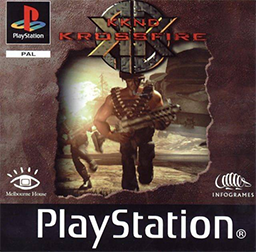
KKnD2: Krossfire is the sequel to KKnD in the KKnD series developed by Beam Software and published by Melbourne House in 1998 for Microsoft Windows. It was released on PlayStation in Europe in late 1998 to early 1999 as KKnD: Krossfire. It is set in the year 2179, 100 years after the Nuclear World War. After spending another four decades underground, the Survivors rose up to a new enemy: the Series 9. The Series 9 robots are machines that have advanced from their farming origins and taken up arms against the humans, Evolved and Survivor, who destroyed their precious crops, their one and only reason for functioning.
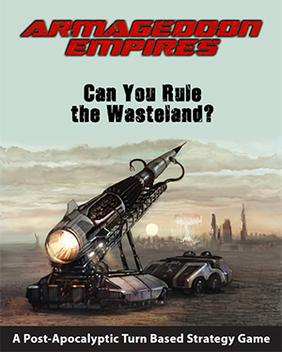
Armageddon Empires is a 4x turn-based strategy video game for Microsoft Windows and Mac OS X. It was released internationally for Microsoft Windows on July 16, 2007, and for Mac OS X on October 9, 2007. The title is the first game released by independent game developer Cryptic Comet.
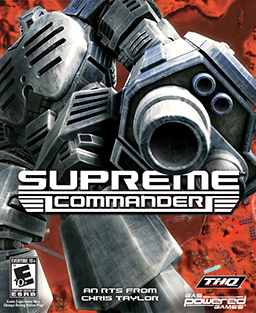
Supreme Commander is a 2007 real-time strategy video game designed by Chris Taylor and developed by his company, Gas Powered Games. The game is considered to be a spiritual successor, not a direct sequel, to Taylor's 1997 game Total Annihilation, and also the Spring remake. First announced in the August 2005 edition of PC Gamer magazine, the game was released in Europe on February 16, 2007, and in North America on February 20.
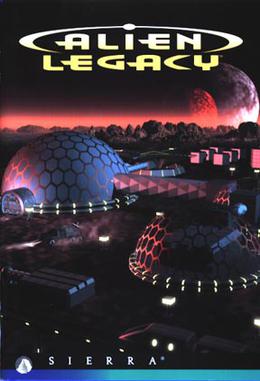
Alien Legacy is a sci-fi strategy game developed by Ybarra Productions and published by Sierra On-Line in 1994 for MS-DOS.
Space Engineers is a voxel-based sandbox game, developed and published by Czech independent developer Keen Software House. In 2013, the initial developmental release of the game joined the Steam early access program. During the following years of active development, Space Engineers sold over one million units. In total as of 2024 the game has sold over 5 million copies In May 2015, for approximately a year and a half, the game's source code was officially available and maintained by KSH to assist the modding community. On December 15, 2016, the game entered Beta and was later officially released on February 28, 2019.

















